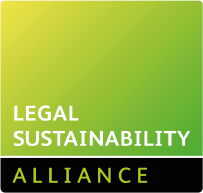
Irish Admiralty High Court Offers Rare Guidance on International Collision of Vessels under the COLREGS 1972
“After a period of drifting and a brief period at a slow speed in a different direction, [the Kirrixki] accelerated and turned onto a north westerly course in the minutes before the collision”. [1]
In a rare judgment in the Admiralty Division, the Irish High Court has offered guidance on the International Regulations for Preventing Collisions 1972 (‘COLREGS’) concerning key issues of application under that international Convention in the 2024 decision of the MV “Hua Sheng Hai” v MV “Kirrixki”, MV “Hua Sheng Hai v Rochelaise Dd Peche S.A [2024] IEHC 182.
The decision offers useful guidance on when a Vessel may not take advantage of an assertion that it is the “stand-on” Vessel, as well as the principles for attribution of liability in a collision situation where neither Vessel can properly be regarded as the “give way” or “stand on” Vessel.
In October 2019, a fishing trawler flying the French flag, the Kirrixki, collided with a large bulk carrier, the Hua Sheng Hai, flying the Hong Kong flag 24 nautical miles West North West of Inis Taraght Lighthouse on the Blasket Islands, off the Southwest Coast of Ireland. The Hua Sheng Hai had a gross tonnage of 44,103 tonnes and 229 metres in length, whereas the Kirrixki was a much smaller vessel with a gross tonnage of 363 tonnes and a length of 37.25 metres.
Recalling the decision in Tojo Maru before the English High Court in 1968, the Court found parallels between the situation before it and the one in that decision concerning a “deliberate” crossing the course of one vessel by another:
“…it seems to me that no vessel is entitled, in face of another vessel seen to be approaching, to put herself deliberately on a crossing course in the position of a stand-on vessel, so as to force that other vessel to keep out of her way” [2]
Seeking to take advantage of an assertion that it was the “priority” Vessel or “stand on” Vessel under Rule 17 COLREGS, and therefore it was for the Hua Sheng Hai to take steps to avoid it, the smaller fishing trawler ultimately failed to persuade the Court of such. The Court found it had created the dangerous situation leading to collision (and was, as a matter of fact, not fishing at the time). Finding it was at greater fault, the Kirrixki was to bear the lion’s share of responsibility for the incident (being found liable in the amount of 85%).
The Hua Sheng Hai also made mistakes. With compelling witness evidence from Captain Simpson (the expert for the Hua Sheng Hai), the Court ultimately found 15% of the liability for the incident should be attributed to the bulk carrier, which resulted in damage to both Vessels and injury to five persons on board the Kirrixki.
The Basis for Liability
A number of facts which were established, either at the outset or upon cross-examination of the Captain of the Kirrixki which ultimately led the court concluding that Kirrixki should have greater liability for the accident:
- Perhaps the most decisive was that, in relation to speed and direction at the time of the collision, the judge found that “after a period of drifting and a brief period at a slow speed in a different direction, [the Kirrixki] accelerated and turned onto a north westerly course in the minutes before the collision” [3]
- The Kirrixki claimed it was the ship with “priority” as the “stand-on” Vessel under the COLREGS, [4] but the Court conversely found that “the trawler cannot claim the status of a stand-on vessel in circumstances where it created a situation of danger where none existed before then”. [5] Though not decisive to the outcome, the Court found in any event “even as a stand-on vessel, it would not have been entitled to behave in the way it did”. [6]
Additionally:
- The fishing trawler was not transmitting information as required by its automatic identification system (AIS system), designed to transmit information about the vessel’s location, identity, course and speed, [7] which ultimately led to the Hua Sheng Hai being misled by that information, [8]
- There was no look-out on the Kirrixki [9] and the captain did not regard it as necessary to have someone always on lookout, [10]
- No alarm, whether to calibrate at the usual 12 miles or otherwise, had been set on the Kirrixki before the collision. [11]
Facts which implicated the larger of the two vessels in terms of liability were:
- It was clear that the Kirrixki would have taken a different course “had [Captain Antelo Malabe of the Kirrixki] seen the Hua Sheng Hai”, [12]
- When the whistle was belatedly sounded on the Hua Sheng Hai, the Court states “I believe that it is likely that the officer on watch was simply trying, as a last ditch and somewhat desperate measure, to alert the trawler to the imminent danger of collision”. [13]
Key Findings Against the Kirrixki
Despite extensive discussion on whether, even as a “stand-on” (“priority”) Vessel under the COLREGS, the Kirrixki had not maintained her “course and speed”, [14] the ultimate finding of the Court was that the Kirrixki could not be such a “priority” Vessel in circumstances where she had created a danger where no such situation had been created before then.
Relying on the decision in the Forest Pioneer, where a trawler took a turn without “heed or even awareness” of the approach of a Vessel like the Hua Sheng Hai, the Court found that the trawler “cannot claim the status of stand-on vessel [because] it created a situation of danger where none existed before then”.
A further parallel drawn with that case was that the manoeuvre was found to be “intentional” in the sense that it involved an “intentional adjustment of course and speed without looking to see if that manoeuvre would take it into the path of another Vessel”.
The position of a “stand-on” Vessel seems to be more where the Vessel is either stationary because it has its fishing nets in the water, or where it is so restricted it is unable to manoeuvre: this is accepted to be the definition by the Court within the COLREGS. [15]
However, the Court found that even if the Kirrixki had had its nets in the water at the relevant time and therefore been a “stand-on” Vessel, it would not have altered the outcome of the decision, [16] because it would have been in breach of its obligations under Rule 17(1)(a) COLREGS to maintain course and speed in any event. Whether that would have changed apportionment of fault is not commented on by the judge, though it is assumed that this might be affected given that the apportionment of fault is based largely on a parallel case of Forest Pioneer where a key part was that the trawler had in fact created the danger. Since creation of the danger was key to the finding that the trawler had not in fact been a “stand on” Vessel, it seems that absent equivalent fault, a Court could presumably have attributed a lesser degree of fault to the trawler depending on assessment of culpability. The Court makes clear that it was the deliberate act by the Kirrixki in the sense of intentional adjustment of course and speed without checking for other vehicles which led to the higher apportionment of blame on its part of 85%. [17]
In terms of failure to keep an adequate lookout, it was said that the Kirrixki’s failure was causative of the collision and the performance of “an almost U turn, and then proceeding to close to maximum speed without even looking”. [18]
It was also found that this U-Turn was conducted in a dangerous situation where no one on the Kirrixki kept a look-out, whether physically or on the radar, [19] both of which are required in terms of keeping a proper look-out all available means under Rule 5 and Rule 7(b) COLREGS. [20]
Finally, in relation to speed, reliance was placed on Captain Antelo Malabe’s evidence, the skipper on the Kirrixki. The increase in speed [21] “in combination with the absence of avoiding action by either or both vessels”, put the Kirrixki “on an inevitable collision course with the Hua Sheng Hai”. [22] This would have probably constituted a further breach of Rule 17(a) COLREGS which provides that the priority vessel must also “maintain its course and speed”. [23] However, this point did not need to be determined as it was decided that the Kirrixki was not engaged in activities which would constitute it as a “priority” Vessel at the time: it was not casting its nets and engaged in fishing operations, but moving at speed and in a different direction at the time of the collision. [24] A considerable part of the judgment is dedicated to analysing the movements of the trawler from earlier in the day when it was fishing to later, when it was regarded as being on “autopilot” heading on a collision course. [25]
This shows that data on the movement of vessels in light of AIS data and any other available data (such as VDR records) could be crucial to attribution of liability and determining whether one Vessel should properly be considered the “priority” Vessel under the COLREGS.
Key Findings Against Hua Sheng Hai
Finding that the Hua Sheng Hai was jointly liable, the Judge remarked on the “casual manner in which the skipper treated the obligation to keep a look-out”. The judgment underscores the importance of both using a physical look-out and appropriate radars to assess the risk of collision: [26] this falls within Rule 7 COLREGS which provides that “every vessel shall use all available means…to determine if risk of collision exists” and Rule 7(b) specifies that “proper use shall be made of radar equipment..”. Findings of fact are made in relation to the “casual” approach to keeping a proper look-out both in relation to physically keeping a look-out and monitoring radars:
- Physical lookout: given the finding that the ship was on “autopilot”, the judge found it was “inherently unlikely that Mr Xu was standing by the wheel for the entire period” and “keeping a constant look-out from the moment he first saw it on the radar at a distance of 10 nautical miles”.
- Radar lookout: the judge also found “the fact that the trawler was drifting should have been apparent to the officer of the watch on the Hua Sheng Hai from the radar screen even though the trawler was transmitting incorrect information about its status”. [27]
According to these findings, it appears that once a vessel comes within a certain range (in this case, 10 nautical miles, which is when Mr Xu, seaman on board the Hua Sheng Hai, first saw the Kirrixki on the radar) such that it would be apparent that there may be a “risk of collision”, persons aboard the other Vessel are required to keep a “constant lookout”, both physically (i.e. by visual sight) and on the radar screen. It was found that had these actions been taken, the accident could have been averted. Therefore, it was partially causative of the accident. [28]
Apportioning fault
Under s. 46 Civil Liability Act 1961, the apportionment of fault between two (or more) vessels may be determined where damage has been “caused” by one or more vessels and that damage “shall be in proportion to the degree in which such vessel was in fault” provided that:
- If, having regard to all the circumstances of the case, it is not possible to establish different degrees of fault, the liability shall be apportioned equally among vessels in fault;
- …
(b) For the purposes of paragraph (a) “the liability of a vessel for damage shall mean the liability of those responsible for the proper navigation and management of the Vessel.”
Decisions interpreting s. 1 confirm that only faults that contributed to the damage or loss concerned can be taken into account when apportioning liability. [29] The court takes into account not only faults which had causative potency but also those which are faults due to the nature of culpability or blameworthiness i.e. irrespective of the extent to which those faults contributed to the damage. [30]
One of the main parallels considered by the court in determining attribution of liability was The Forest Pioneer (as mentioned) which also concerned a trawler which took a dangerous action. Finding that such an action would be “entirely inconsistent with the rationale underlying Rule 17(a)(i)” which requires a stand-on vessel to maintain its course and speed, the background to attribution was that “not even a stand-on vessel…could have been entitled to behave the way it did”.
In the circumstances, the failures on the part of the Kirrixki were “many times more significant” than the failure of Hua Sheng Hai to take timely action to avoid the “unexpected and sudden danger created by the trawler”. [31] Thus, the court followed the apportionment in Forest Pioneer of 85% to the trawler and 15% to the carrier which he found to be consistent with the principle that not just the causative potency can be taken into account when establishing fault but also blameworthiness. [32] The finding does seem to be focused more on the blameworthiness element, but the fact that the Kirrixki was the trawler which created the danger, it can be read its actions had more causative potency, with the responsibility of the Hua Sheng Hai being to avoid that danger.
Conclusions
It might be considered that the Hua Sheng Hai was unlucky to have been left with liability given the clear danger which the Kirrixki placed in its path. However, once it was established that the staff on board the Hua Sheng Hai had also failed to keep a proper lookout, it was clear that the Hua Sheng Hai had also not done its utmost to avoid the collision.
Taking a broad approach to attribution including consideration of both blameworthiness and causation, the approach of the judge here under s. 1 of the 1961 Act shows where there might be fault both in terms of causation and blameworthiness, the other Vessel is likely to pay a share in liability. That applied even where the AIS system was transmitting incorrect information and even if the red-under-command lights were unlit or absent, as those on board the Hua Sheng Hai were found to not have done its utmost to avoid the collision until sounding the alarm of the ship’s radar at 23:47:48.
This decision underscores the importance of carefully establishing the facts when deciding how fault is likely to be attributed: was a Vessel allegedly described as a “priority” Vessel really engaged in “priority” Vessel activities at the time of the collision? Did the Vessel undertake the correct “look-out” procedures, considering both physical and radar requirements? Did the Vessel(s) maintain the correct lights in the circumstances and transmit the correct data? If there was inadequate transmission of data, should the other Vessel have taken any other action to avoid the collision?
With our specialised Dublin office, we are able to offer focused insights into issues concerning liability at sea including how similar matters are dealt with in the Irish courts. The recent decision in Hua Sheng Hai shows that important insights are to be drawn from this case law.
References
[1] MV “Hua Sheng Hai” v MV “Kirrixki”, MV “Hua Sheng Hai v Rochelaise Dd Peche S.A [2024] IEHC 182 [161]. All further references to paragraphs will be to the decision. [2] Citing The Tojo Maru [1968] 1 Lloyds LR at p. 377 (Willmer L.J.); cited at [223]. [3] (161). [4] Facts in Decision: (28). As will become clear, this apparent admission by Kirrixki was fatal to findings against it concerned its speed. [5] (226) [6] (225). [7] (3) (finding of fact at the outset). [8] (184). [9] Established following cross-examination of the captain Captain Malabe: (63). [10] Evidence of Captain Malabe: (73). [11] Evidence of Captain Malabe: (72). [12] (226). [13] (200). [14] Thereby being in breach of her obligation as a “stand on” Vessel in any event, under Rule 17(1)(a) COLREGS. [15] Statement of Law on this point at (203), Finding it did not have its nets in water at relevant time: (225). [16] (225). [17] (224). [18] (163). [19] (225). [20] (159). [21] Set out in greater detail at (175). [22] (163). [23] (164). [24] (177) – (178). [25] (161) – (182). [26] Law at (225). [27] (206). [28] (216). [29] (217). [30] (218). [31] (227). [32] (229).
Latest news & Insights

Let the Games Begin…but what about the risks?
The latest event in 2024’s summer of sports is huge - the Paris 2024 Olympic and Paralympic Games (referred to...

Calling Fleet Operators – The Rising Risks of Motoring Offences
A year on from the introduction of sentencing guidelines for driving offences in England & Wales we’re seeing the trends...

Getting Britain Building Again… But Quality is A ‘Key’ Issue
In a decisive move to address the housing crisis and stimulate economic growth, the new Chancellor of the Exchequer, Rachel...

Two new Partners bolstering HF’s full-service expansion
HF are delighted to have taken on two new Partners based in Glasgow. James McMillan has in-depth expertise focused on...





